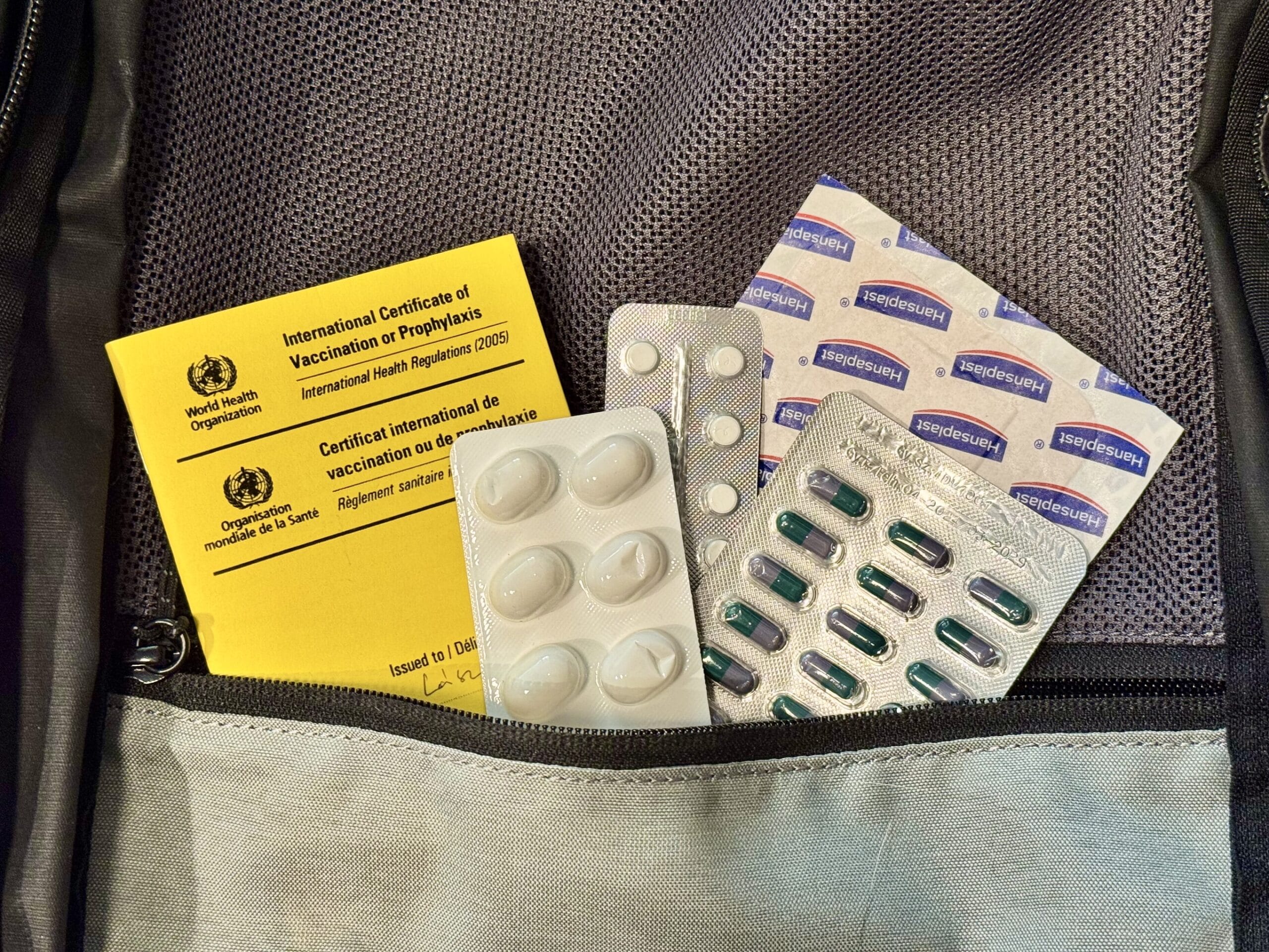Anyone who regularly travels to far-flung destinations has at least one story about a spectacularly unpleasant case of food poisoning or some other health disaster – and statistics back this up, with the CDC reporting that 30-70% of international travelers experience traveler’s diarrhea during a typical two-week trip, depending on destination and season. I’m no exception – I’ll never forget when Andrea and I were practically immobilized in our windowless Vietnamese hotel room after carelessly eating a banana pancake, or when Peter and I tried to explain to a Peruvian pharmacist using gestures and “bzz-bzz” sounds that our insect bites from Aguas Calientes were itching like crazy and we desperately needed something before we lost our minds.
These kinds of experiences – which later become funny stories at dinner parties – are pretty much inevitable, especially if you frequently travel to exotic places. It’s pointless to delude yourself into thinking you’ll always be perfectly healthy throughout every trip. However, you can significantly reduce the unpleasantness with some attention, preparation, and a few tricks. And this matters, because who wants to lose precious days of their long-awaited vacation dealing with various ailments?
In this article, we’ll explore how to prepare for longer trips to distant destinations, what to watch out for while traveling, and what to do if disaster strikes and you need medication or, worse, medical care abroad.
Important disclaimer: Everything written here is based solely on personal experience and layperson opinions, and should never be taken as professional medical advice. Always consult with a qualified healthcare provider for any health-related questions!
Pre-Travel Health Preparations
Visit Your Doctor Before Departure
Even if you’re feeling perfectly fine, it’s worth scheduling a general check-up with your doctor before a long trip. This is especially important if you regularly take prescription medications – you’ll need to fill prescriptions for the duration of your trip and obtain documentation proving you legitimately need these medications. Some countries can be quite strict at borders about this, but an official document doesn’t take up any space in your luggage, so why not bring it along?
Next, research recommended and required vaccinations. Your doctor can usually help with this, but you can also find excellent information on the CDC (US Centers for Disease Control) and NaTHNaC/Travel Health Pro (UK) websites, organized by country. Some vaccinations are worth getting regardless of your destination (Hepatitis A/B, typhoid, tuberculosis, etc.), while others are specifically required by certain countries or regions within countries (yellow fever, COVID-19). As I write this, COVID is thankfully just a bad memory, but yellow fever vaccination is worth getting since it’s required in several places, especially if you’re arriving from an at-risk area. Plus, it provides lifetime protection, so you only need to endure it once. I always carry my WHO-standard vaccination booklet regardless of destination – you never know when it might come in handy (though I’ve never actually had to show it).
Schedule a dental check-up before long trips. Few things are worse than sudden tooth pain while traveling. Dental care abroad can be expensive and uncertain, and most travel insurance policies are notoriously stingy with dental coverage.
Research Health Risks at Your Destination
Some areas pose particular health challenges where extra caution is warranted. Malaria remains a serious concern in developing countries. Always check whether your destination has infected areas (I use the Travel Health Pro site mentioned earlier). If you’re heading to a high-risk area, definitely consult your doctor – you’ll likely need to start taking malaria prevention medication before travel. Several types exist, with newer ones generally having fewer side effects.
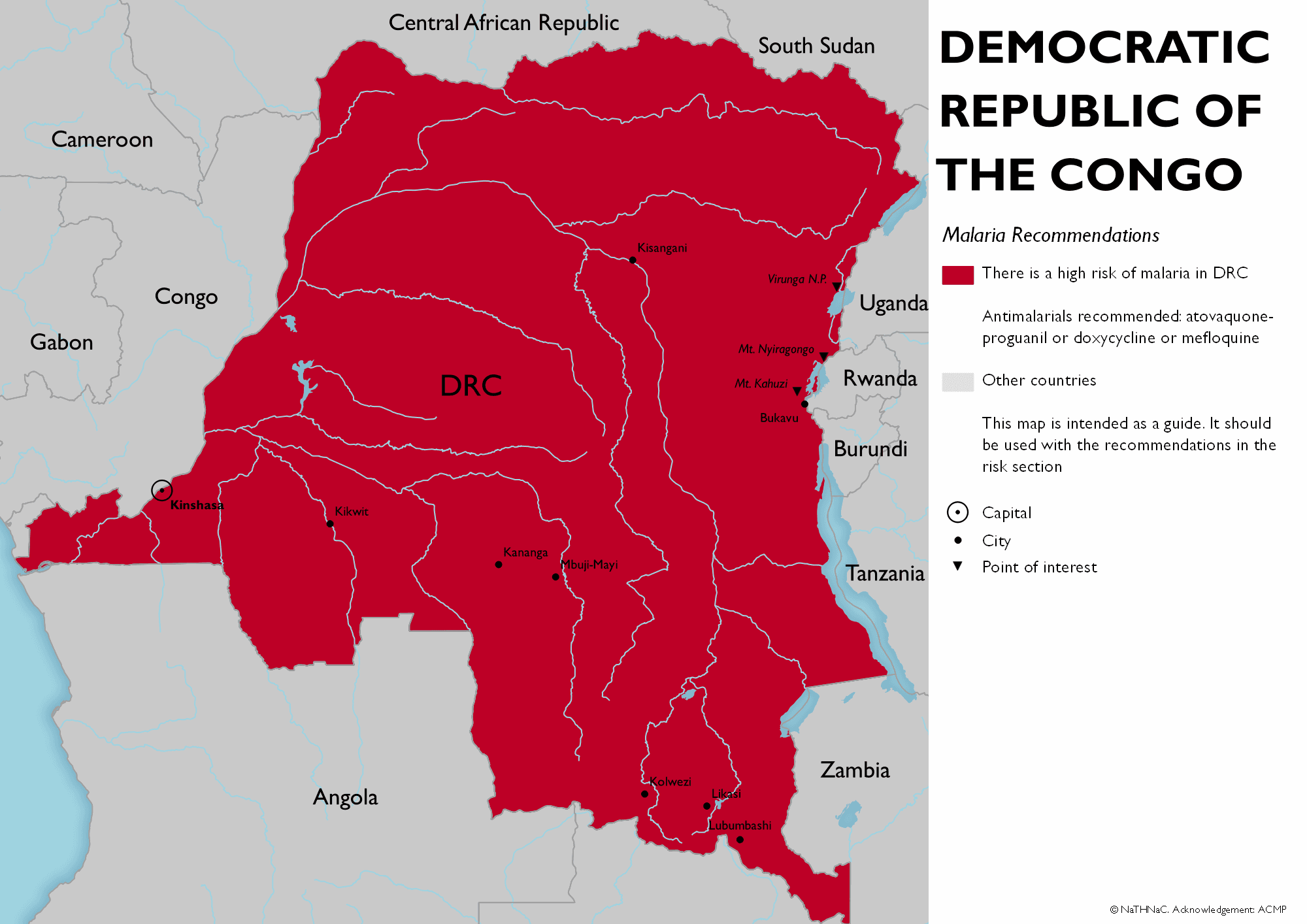
Tap water quality – or rather, its “drinkability” – is another crucial consideration. In many places, tap water isn’t recommended for consumption. In some locations, it’s strongly discouraged, and you should even avoid drinks with ice that might be made from tap water. While water filter bottles exist, it’s important to understand that while many can filter out contaminants and bacteria, they struggle with viruses – something I learned the hard way. So while reducing plastic waste by buying fewer bottled waters is admirable, sometimes it’s simply not feasible. A good solution is buying large, returnable water jugs and refilling your reusable bottles from those.
Since we don’t just drink but also eat – and while traveling, we want to try as many local dishes as possible at authentic local spots – stomach upset or food poisoning is almost guaranteed to strike every traveler eventually. While taking precautions makes sense (washing/sanitizing hands before eating, avoiding obviously sketchy places), half the fun of travel is enjoying street food, so it’s better to prepare for symptom management (more on that later).
Another issue not caused by pathogens but equally dangerous is altitude sickness. People living near sea level can start feeling effects even at 2,500 meters (8,200 feet), and symptoms worsen rapidly with quick ascents to higher elevations, potentially becoming life-threatening. Gradual acclimatization over several days is recommended for high altitudes, though prescription medications exist that can significantly reduce symptoms and risks.
Get Travel Insurance!
I cannot stress enough: never embark on international travel without adequate travel insurance. What constitutes “adequate” depends on several factors.
For “simpler” destinations, the insurance included with your bank or credit card might suffice, especially if you have a premium package or travel-specific credit card. I usually travel with insurance from Revolut’s higher-tier packages (Premium, Metal) – note that conditions vary by country, so check! While I’ve fortunately never needed to use it, several friends have filed claims that were quickly approved and paid.
For more exotic destinations or extended trips (several months), consider more comprehensive coverage. Not all can be purchased from every country, but popular options include:
- True Traveller: Backed by AXA Group, specifically serving European travelers. Highly customizable packages with various add-ons (high-altitude trekking, scooter riding, electronics coverage, etc.).
- World Nomads: Primarily focuses on English-speaking countries. Offers annual plans with trips up to 45 days, or 6-month continuous travel packages.
- SafetyWing: Specializes in digital nomads and companies for long-term stays abroad, less traditional travel insurance.
- IMG: Good for shorter trips, with particularly high evacuation limits.
- Travel Guard: AIG’s travel insurance specifically for US citizens, even covering extreme destinations like Antarctica.
Needless to say, whichever provider you choose, always read the policy conditions thoroughly and clarify deductibles for various scenarios. Pay attention to destination-specific exclusions. Most insurance covers trekking up to 2,500-3,000 meters (~8,000-10,000 feet); above that requires supplementary coverage (if available at all). This might seem high initially, but significant parts of Peru are above 2,500 meters (~8,000 feet), and Vinicunca (Rainbow Mountain) peaks above 5,000 meters (16,400 feet). Nepal costs extra with some providers (like True Traveller) due to frequent insurance fraud.
You might also need exceptionally high evacuation coverage – for example, if heading to Antarctica. Most cruise companies require at least $250,000 coverage, which typically far exceeds standard insurance limits. Always thoroughly consider your itinerary and select appropriate coverage accordingly.
Building Your Travel Medicine Kit
While it’s pretty difficult nowadays to travel somewhere you can’t relatively easily obtain basic medications, it’s still practical to have essentials on hand – imagine trying to explain ‘diarrhea’ in charades at 3 AM in rural Vietnam, or missing your only day at Machu Picchu because you’re hunting for ibuprofen.
Essential Medications for Every Traveler
We typically bring these OTC medications on almost every trip:
- Pain relievers and fever reducers (ibuprofen, acetaminophen, etc.): A headache can strike anytime and completely ruin an otherwise perfect day.
- Anti-diarrheal medication (like loperamide): You’ll almost certainly need this, even if the foreign food isn’t spoiled or contaminated
- Motion sickness prevention (like Hyoscine Hydrobromide): Especially if you’re prone to travel sickness, not just on boats but also in buses or cars
- Hand sanitizer: You can drastically reduce stomach upsets with proper hand washing and sanitizing
- Nasal spray: In Andrea’s case, even the slightest cold leads to immediate complete nasal congestion, so she always carries nasal spray
- If you have allergies, bring something for symptom relief
You don’t need to pack your entire home medicine cabinet – a few of each item is usually enough until you can reach a local pharmacy.
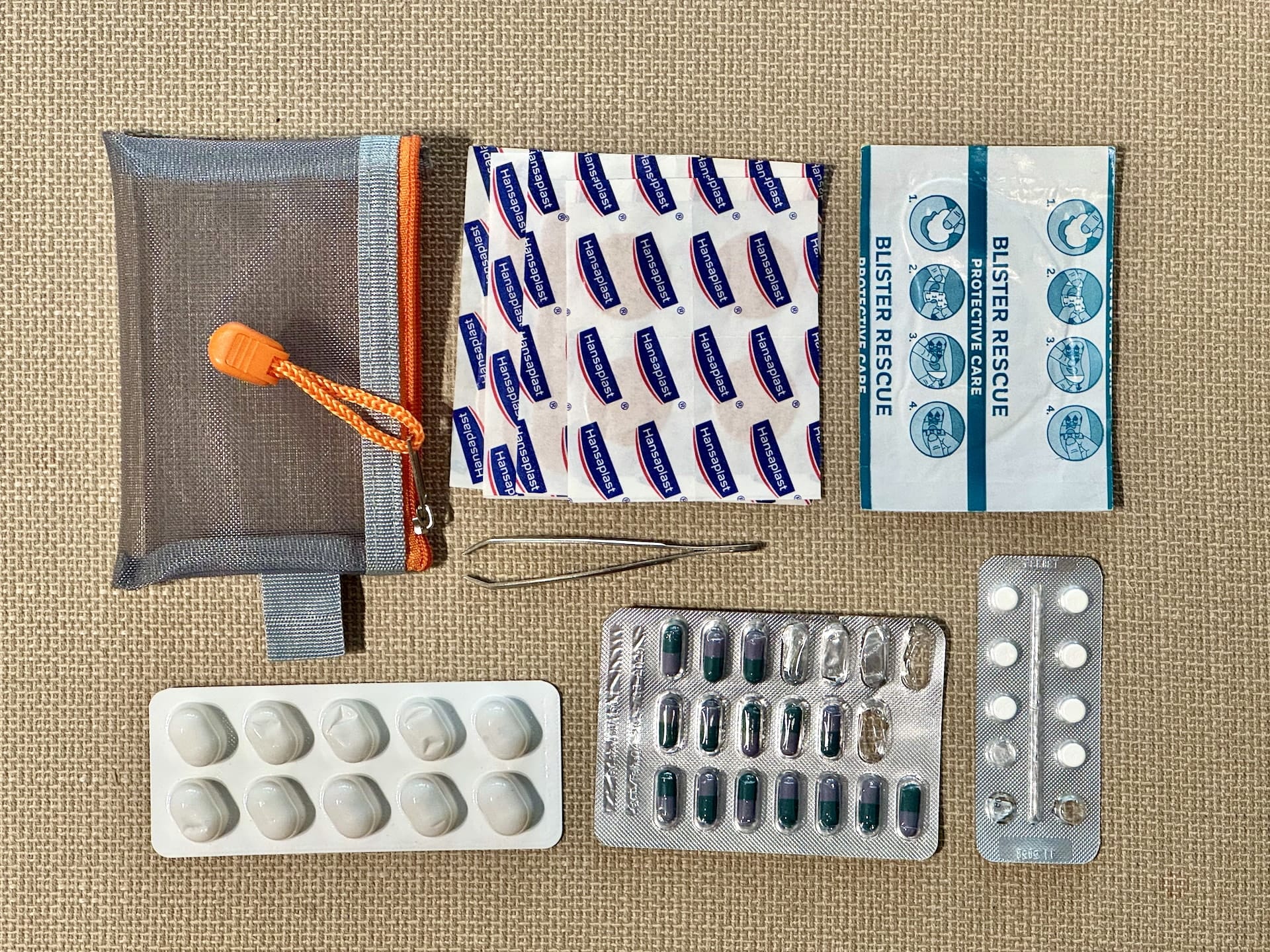
Keep medications in their original packaging with labels. Some countries have strict regulations about unmarked pills, and having proper labeling can prevent unnecessary delays at customs.
Prescription Medications
As mentioned earlier, obviously bring enough of any prescription medications you regularly take for your entire trip, or if that’s not possible, research (and consult your doctor) about obtaining them at your destination.
This category also includes prescription medications you don’t take regularly but are bringing specifically for your destination: malaria prevention drugs and altitude sickness medication, for example.
First Aid Supplies
It’s worth carrying a small first aid kit for minor injuries and discomforts. Our backpack usually contains:
- Various sized adhesive bandages (for minor cuts and scrapes)
- I bring 1-2 special blister bandages for my heels in case shoes cause problems
- A couple of antiseptic wipes
- Tweezers can be incredibly useful (for splinters and such)
- Maybe a few face masks, just in case
We’re pretty minimalist in this category too, but fortunately, we’ve never really needed anything beyond these items. Of course, if you’re heading somewhere more extreme, prepare accordingly – for multi-day mountain treks, a thin emergency blanket doesn’t weigh much or take up space but could literally save your life.
Regional Health Considerations
Let’s look at some quick tips about the most common health issues by continent/region. This is really just a brief overview with some personal experiences – before departing, it’s worth researching your specific destination more thoroughly.
Southeast Asia
In Southeast Asia, it’s hard not to dive into the incredibly diverse and delicious street food scene. This is primarily what to watch out for – Andrea and I had our worst food poisoning experience here, though ironically not from street food but from a restaurant in Hue, Vietnam, next to the imperial palace. Everything turned out fine eventually (though we had to reorganize our itinerary a bit), but I haven’t eaten banana pancakes since.
Water quality also deserves attention – stick primarily to bottled (or large jug) water. Dengue fever and malaria are present in some areas, so research these using the sites linked above.
South America
During our five-week South American adventure with Peter, we both had our share of travel health problems. It started with severe stomach upset for me, which hit Peter a day later. Then in Peru, I caught some kind of flu-like illness, and finally, we were both devoured by sandflies in Aguas Calientes.
This is where we learned that while water filter bottles might work against bacteria, they don’t filter viruses (which are too small), so we quickly switched from tap water to bottled water – especially after locals were horrified to learn we’d been drinking tap water at our bungalow near Tayrona. The results were predictable.
Altitude is a significant factor: the Andes mountain range runs along the continent, making it easy to reach places well outside the average person’s comfort zone. We brought altitude sickness medication but ultimately didn’t take it – instead, we ascended gradually through Peru.
Yellow fever is present in some countries, and even where it isn’t, proof of vaccination might be requested (though this never happened to us). Watch out for other mosquito-borne diseases like Zika virus.
Africa
Surprisingly, I’ve never had any problems in Africa, though I’ve only visited the northern regions a few times for shorter periods. I was definitely more careful than usual about food and water.
When discussing Africa, we can’t ignore malaria, which remains a serious problem in central regions. If traveling to heavily infected areas, definitely consult your doctor and begin appropriate medication.
Europe
Europe is relatively straightforward health-wise, though I’ve certainly gotten food poisoning here too, so stay vigilant. If hiking in nature, ticks can cause unpleasant surprises, potentially transmitting diseases like Lyme disease or meningitis.
Worth mentioning that climate change is gradually introducing mosquitoes originally native to North Africa, occasionally bringing diseases like West Nile virus – fortunately still very rare.
Australia
When travelers think of Australia, they probably worry less about diseases and more about various venomous creatures (snakes, spiders, jellyfish, etc.). Luckily, I had no problems during our Australian trip, and we didn’t encounter giant spiders or snakes (despite visiting the outback), though it’s true that some of the world’s most venomous creatures live here. The good news is the country is prepared for such cases with antivenoms for the most common venomous animals in each region – every hospital and many clinics stock polyvalent antivenoms – but it’s crucial to seek medical help within the ‘golden hour’ if bitten, as some venoms can be fatal within 30 minutes.
Tap water is supposedly completely safe and drinkable in most places, but I’ll admit we almost always drank bottled water. Why? The tap water just tasted terrible to us in most places – must have been our problem (locals drank it without issue), but we really didn’t like the taste.
North America
Similar to Australia, nature poses more danger than diseases in North America. What I think deserves special attention is proper insurance: the United States has by far the world’s most expensive healthcare, which is why many travel insurance policies charge extra for US coverage even with worldwide packages, sometimes with additional time restrictions. Double-check that you’re actually covered here too.
Download offline translation apps before traveling to areas with limited internet. Being able to communicate symptoms or medication needs in the local language can be invaluable in emergencies.
Staying Healthy While Traveling
Hooray, you’re on the road, enriching your life with amazing new experiences every day! While enjoying these adventures, here are some things to keep in mind to ensure your trip remains as wonderful as when you started.
Food Safety Rules
You’ve probably heard the golden rule “cook it, peel it, or forget it,” which actually summarizes things quite well. In more detail, this means when eating somewhere, preferably eat cooked food, and if consuming fruit, choose ones that can be peeled, so most pathogens end up in the trash along with the skin.
We can sophisticate this a bit further. Even with cooked food, make sure it’s actually hot when served. Good examples include steaming pho in Vietnam or freshly grilled satay in Thailand. While not always the healthiest choices otherwise, foods fried in hot oil rank high for food safety. However, if something has been surviving under a heat lamp for the past three hours on a sweltering street corner, it doesn’t matter that it was cooked earlier – look for other options.
I should specifically mention dairy products: many countries don’t pasteurize these, so even if you normally have no issues with dairy, you might encounter unpleasant surprises.
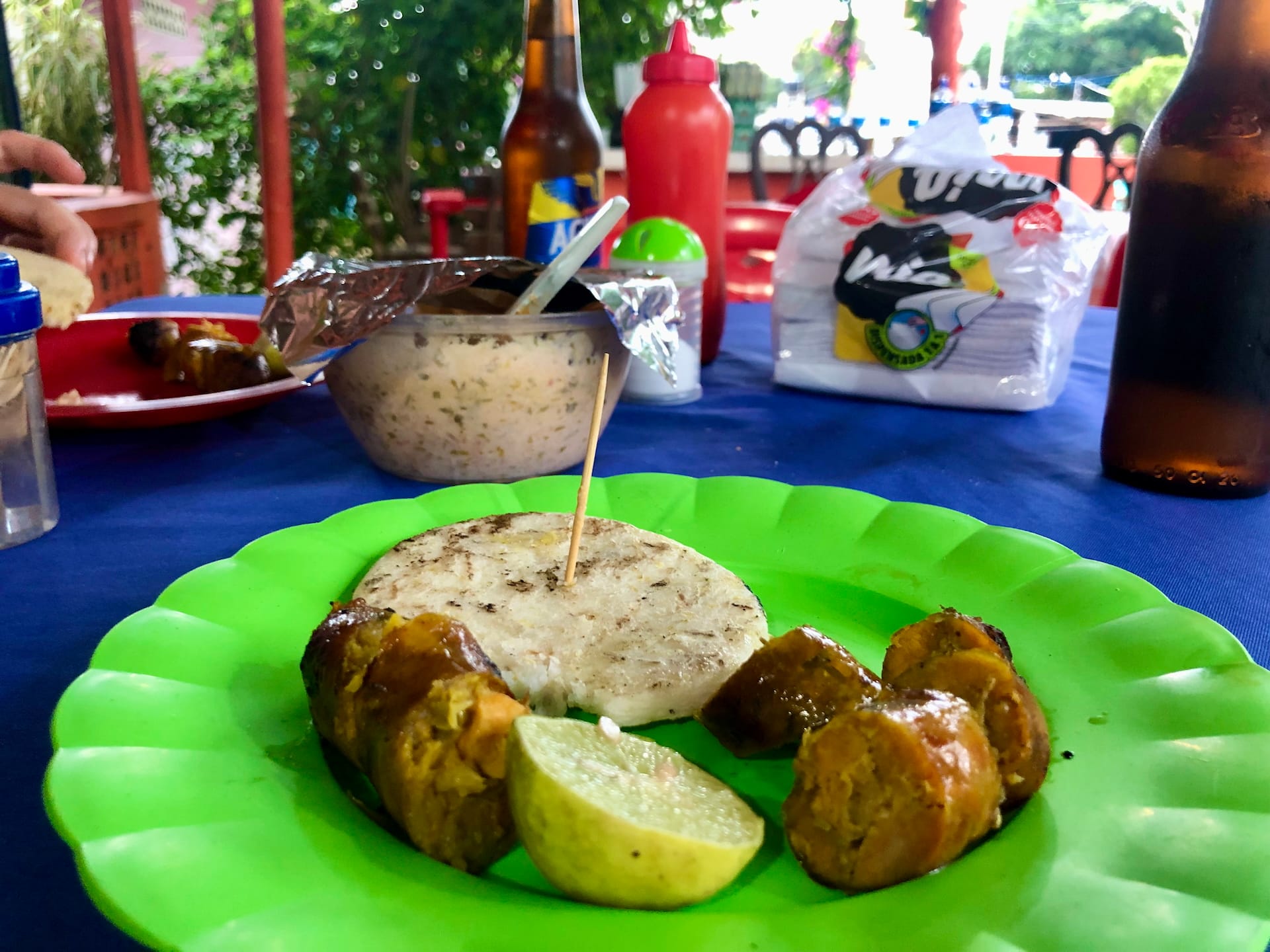
Street Food Guidelines
Street food will always be the most authentic and exciting food you can experience in any country. However, pay attention to where you consume it. If locals are forming long lines at a food cart, that’s generally a good sign – who would come back the next day for another serving if yesterday’s lunch ended in explosive diarrhea? This is why Peter and I tried a roadside chorizo stand in Colombia that didn’t look particularly trustworthy at first glance but was packed with locals greeting the owner like an old friend. The result: the best grilled chorizo of my life.
Timing matters too. While traveling easily disrupts your daily rhythm (fortunately), it’s still worth eating when others do, during normal breakfast, lunch, and dinner times. That’s when foods are most likely freshly prepared due to high turnover, while mid-afternoon you might unfortunately get leftovers from 3-4 hours earlier.
If a place looks visibly dirty and disgusting, don’t experiment. However, keep in mind that much of the world has more relaxed food safety standards than North America or Europe, so don’t miss out on one of travel’s best experiences just from fear!
Water Safety Tips
Sure, just buy bottled water and everything will be fine, you might think. But water safety is a bit more complex than that. Even when buying bottled water, in certain places it’s worth checking that it’s really an intact, sealed bottle. If you want to be absolutely certain in places where tap water refilling might occur, buy major international brand waters from larger supermarkets.
If bottled water isn’t available and tap water drinkability is questionable, you still have options – though you’d really need to venture far off the beaten path for this. The “ancient trick” of boiling water: boiling tap water for a few minutes will likely kill problematic pathogens (though this won’t help with chemical contamination). Water purification tablets are also available for truly remote locations.
Water doesn’t just mean what you drink. Water is used to wash the salads and fruits you eat (hopefully), and ice is made from water – usually tap water in most cases. So if you’re somewhere with really risky tap water, avoid such foods and drinks too. In extreme cases, even brushing teeth with tap water isn’t recommended.
Jet Lag and Sleep
I’m incredibly fortunate because I practically never get jet lag, whether traveling east or west from my starting point. For many people, however, larger time differences can cause days of unpleasant symptoms, so it’s worth preparing for this too.
I think it’s somewhat easier when it’s earlier in your destination than where you started: just stay awake until the end of the day without napping, and chances are your biological clock will mostly adjust by the next morning. The other direction can be more problematic because sleep is difficult when you’re wide awake. You can experiment with melatonin supplements, but time will probably be the real solution.
If jet lag is really problematic for you, you can start gradually adjusting your body to the new time zone about a week before departure: gradually go to bed earlier (or later) by half an hour to an hour daily. Of course, this might cause disruptions in your normal daily life, but that’s still better than during your long-awaited vacation, right?
From another perspective, I’m not lucky because I’m particularly sensitive to needing darkness and quiet when trying to sleep. In much of the world (especially the quiet part), this can be seriously challenging, so I always start any trip with earplugs and bring an eye mask, though I particularly hate the latter. On the bright side, my body becomes much more forgiving of noise and light while traveling, probably because I tire myself out much more during the day than at home.
Exercise and Activity Considerations
Speaking of tiring yourself out: if going on a longer trip, it’s worth keeping exercise and sports in mind. Of course, people typically move much more while traveling (whether walking or swimming) than at home, so you don’t necessarily need to follow a strict workout plan – even if you’re consuming more delicious food and beer than during gray weekdays.
I generally come home a few kilograms lighter from multi-week trips, but if that’s not how it works for you, pay attention to getting adequate movement while traveling.
Many hotels worldwide now offer guest access to nearby gyms or have basic exercise equipment. Ask at reception if maintaining your fitness routine is important to you.
When Things Go Wrong: Dealing with Illness Abroad
Despite all precautions, disaster struck? Here are some tips for minimizing the unpleasantness of illness while traveling.
Finding Medical Care
Needless to say, if you’re in a serious, life-threatening situation, immediately call local emergency services. It’s worth noting the necessary phone number(s) before travel, but fortunately, most smartphones now automatically dial the appropriate emergency number. Also consider writing your most important information on a small card (name, date of birth, passport number, blood type, any existing conditions, regular medications, emergency contact) and always keeping it with you.
If the situation isn’t serious, first call your insurance company’s assistance number – they can tell you which nearby hospital they recommend and which they have contracts with, potentially saving you from unpleasant surprises in the form of hefty bills later.
Citizens of most countries can register their travel before departure, so if a natural disaster or other emergency occurs, your home country will know you’re there and can try to help. Save your local embassy or consulate number too – you can reach them for help in emergencies.
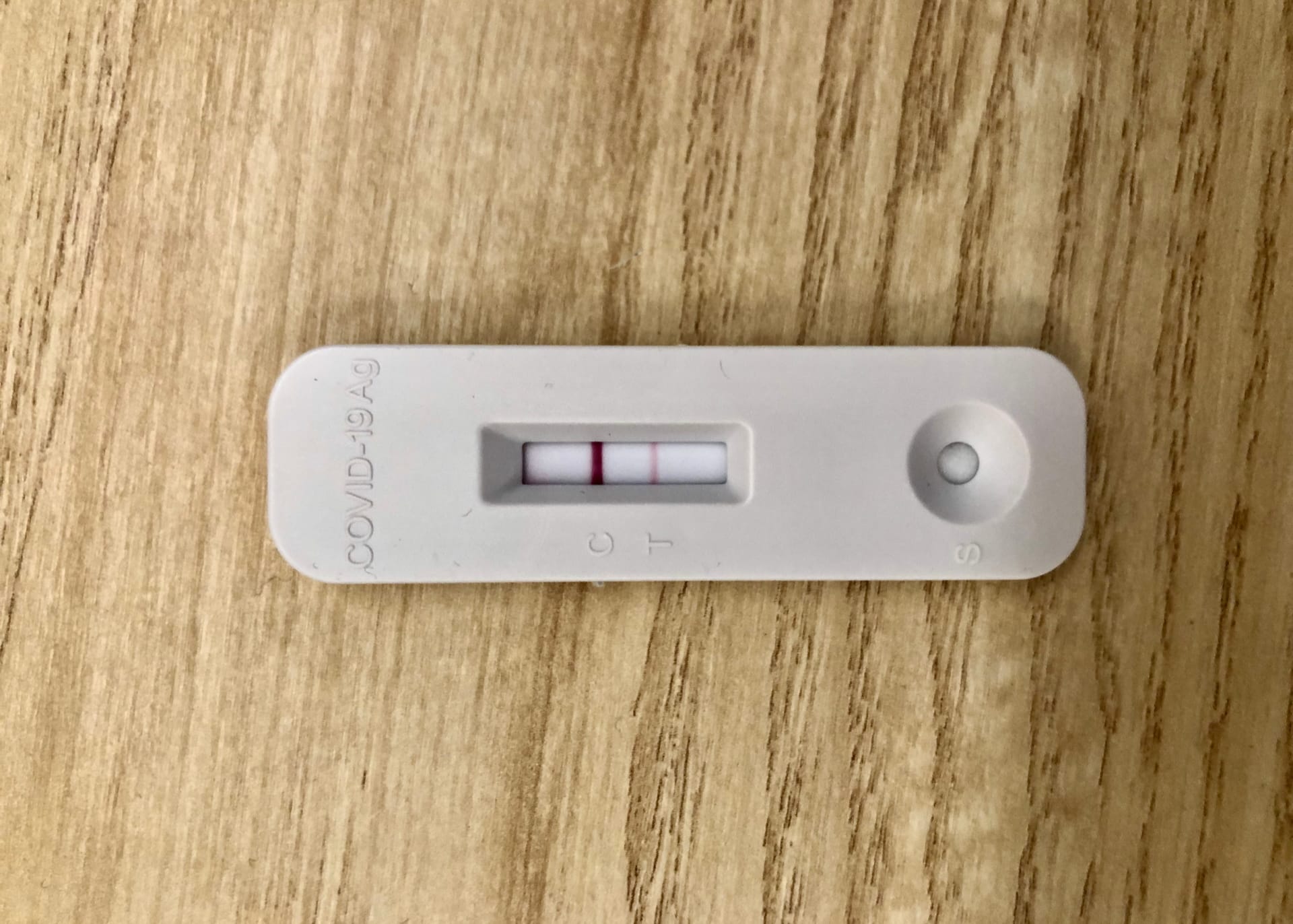
Buying Medication Abroad
These days, there’s hardly any popular destination where you can’t easily access most over-the-counter medications. Pharmacies exist in every major town and are usually well-stocked. Remember to memorize or write down some common active ingredient names (see above) because medications abroad certainly won’t have the same names and forms as at home. The pharmacist will immediately know what you’re looking for from the active ingredient name. Not to mention that generic alternatives are usually cheaper than brand names, despite containing the exact same active ingredients in the same amounts.
Simpler symptoms (insect bites, colds) can be pantomimed quite effectively to the pharmacist, but Google Translate has helped me several times in such situations when lacking local language skills.
Your Travel Health Action Plan: Stay Safe and Healthy Worldwide
After exploring the ins and outs of travel health, let’s recap the essential points that will keep you healthy and prepared for your adventures around the globe.
Key Travel Health Tips to Remember
Travel health isn’t about paranoia – it’s about smart preparation that lets you enjoy your trip to the fullest. Remember these key takeaways:
- Most travel health issues are preventable with basic precautions
- A well-stocked medicine kit can save your vacation
- Quality travel insurance isn’t optional – it’s essential
- Local medical care is available almost everywhere, but knowing how to access it matters
- Food and water safety rules exist for good reasons, but don’t let fear stop you from experiencing local cuisine
The goal isn’t to travel in a protective bubble but to minimize risks while maximizing experiences. Every seasoned traveler has their horror stories, but they also have incredible memories of meals, adventures, and connections that wouldn’t have happened if they’d played it completely safe.
The Ultimate 30-Day Pre-Travel Health Checklist
- 30 Days Before:
- Schedule doctor’s appointment for check-up and travel consultation
- Research destination-specific health risks and vaccination requirements
- Book any needed vaccination appointments
- Start researching travel insurance options
- 21 Days Before:
- Get required vaccinations (some need time to become effective)
- Order prescription medication refills
- Schedule dental check-up if needed
- Purchase travel insurance
- 14 Days Before:
- Assemble your travel medicine kit
- Get documentation for prescription medications
- Confirm insurance coverage details
- Research medical facilities at your destination
- 7 Days Before:
- Final pharmacy run for OTC medications
- Download offline translation apps
- Save emergency contact numbers
- Create emergency information card
- Day Before:
- Pack medications in carry-on
- Double-check insurance documents
- Ensure emergency contacts are saved in phone
- Review food and water safety guidelines for destination
Travel Insurance: The Most Important Investment for Your Trip
If there’s one piece of advice I’d emphasize above all others, it’s this: never skimp on travel insurance. The difference between basic and comprehensive coverage might be $50-100 for a trip, but the difference in a medical emergency could be tens of thousands of dollars.
Here are our top recommendations:
For most trips, World Nomads offers excellent comprehensive coverage with high medical limits and covers adventure activities that many standard policies exclude. Their claims process is straightforward, and they’re available in most countries.
If you’re planning extended travel or working remotely, SafetyWing provides affordable monthly coverage that acts more like health insurance for nomads. It’s particularly cost-effective for trips longer than a month.
For European travelers, True Traveller (backed by AXA) offers highly customizable policies with specific add-ons for activities like high-altitude trekking or motorbiking. Their coverage is thorough and reasonably priced.
Whichever provider you choose, ensure your policy includes:
- Medical expenses of at least $100,000 (higher for US destinations)
- Emergency evacuation coverage
- 24/7 assistance hotline in multiple languages
- Coverage for all your planned activities
- Minimal or zero deductibles
Remember, the best travel insurance is the one you never need to use – but when you do need it, you’ll be incredibly grateful you invested in quality coverage. Safe travels, and may your only medical need abroad be sunscreen!
